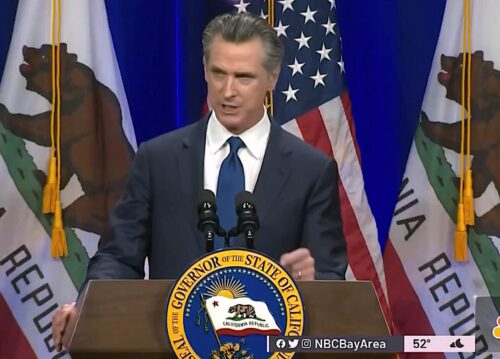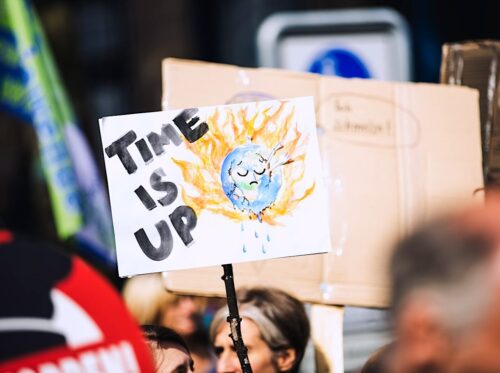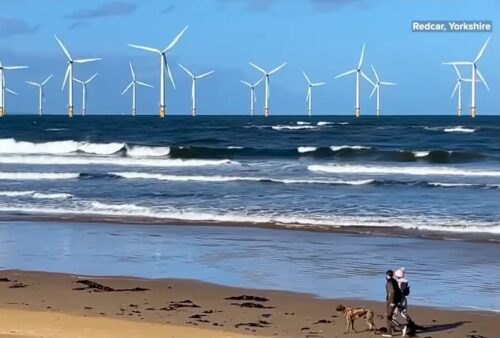
Coal provides about 30 percent of America’s electricity.
The draft EPA rule still seeks to curb CO2 emissions but provides states with essential flexibility to balance this requirement with meeting their energy.
As before, power plant emissions are still estimated to fall 33 percent below 2005 levels by 2030 but do so without imposing the high CPP costs.
Under ACE, each state is allowed to select the most appropriate and effective technologies to achieve emission reductions through “heat-rate” efficiency improvements at individual power plants.
Heat rates are influenced by numerous variables, a key factor being the fuel type used.
For example, low-sulfur coal from Wyoming’s Powder River Basin is cleaner than Appalachian coal, but it burns less efficiently and emits more carbon.
Lignite from Mississippi produces low-cost electricity but burns less efficiently with higher emissions. Such fundamental tradeoffs considerations were ignored under the Obama CPP rule.
ACE also revises CPP “New Source Revenue” permitting guidelines to allow power plant operators to perform routine maintenance and to make upgrades without triggering requirements to implement expensive equipment makeovers.
Under the Obama administration’s punitive anti-carbon CPP rules, states would have been compelled to reorganize their electric grids to favor renewable fuels, forcing them to close down coal plants with years of remaining life and before alternatives could compensate for lost power capacity.
Costs for new technologies mandated in order for the plants to meet the plan’s early emission targets didn’t warrant serving as the basis for even larger investments required to meet later targets.
The Trump EPA had announced its intent to abandon CPP in October of 2017 in response to lawsuits filed by more than half of the states, a 2016 implementation stay imposed by the U.S. Supreme Court, and the rule’s high costs versus prospectively nonexistent benefits.
Even the Obama EPA had acknowledged that CPP would have virtually no influence on climate change.
Under CPP, utilities would have struggled to keep power grids stable. Compliance for states transferring energy dependencies to far more costly and less reliable wind and solar sources would bankrupt industries and businesses, imposing disproportionate stresses upon the poorest households.
Prices of everything manufactured, grown, eaten or needed to keep lights on and buildings air conditioned would be adversely impacted.
These burdens would weigh heaviest upon residents of states that depend upon coal and natural gas for most of their power.
The National Economic Research Associates (NERA) has estimated that the CPP rule would have increased electricity prices by double digits in 40 states at costs up to $292 billion.
As The Wall Street Journal has reported, the Obama EPA had rigged its cost-benefit analysis by deeming improved efficiency an “added cost” rather than a benefit.
Congress had previously turned down President Obama’s request to pass supporting CPP legislation.
Accordingly, the Supreme Court’s stay upon CPP implementation served as a rebuke to the Obama EPA’s overreach of the federal government’s constitutionally limited and enumerated powers which leave broader plenary “police powers” to them.
The “Clean Power Plan” was a murky political-ideological scheme to stiff states, taxpayers and energy consumers with huge cost burdens.
These expenses included capital-intensive, decades-long transitions needed for adding expensive and unreliable wind and solar infrastructures, coal plant retirements and upgrades, restructured transmission lines, and new natural gas pipelines.
ACE doesn’t roll back the Obama-era emission reductions, although they very well might have been struck down as an abuse of regulatory power in any case.
Nevertheless, the draft — which was issued a month ago — is certain to be challenged in courts following another month allowed for comments.
Regrettably, but also understandably, the Trump administration didn’t also take action at this tumultuously partisan time to rescind the EPA’s 2009 “endangerment finding” upon which CPP was based.
EPA has taken deceptive liberty under the Clean Air Act to conflate beneficial plant-nourishing CO2 emissions with dangerous “climate pollution.”
ACE will neither favor coal over other fuels nor punish it out of existence as previously attempted.
It will simply enable coal to compete against cheap natural gas and heavily subsidized wind and solar power on a more level playing field.
The Energy Information Administration (EIA) projects that coal generation will level off in the future as older facilities shut down and are replaced with more efficient and cleaner natural gas plants.
Shale fracking is now coal’s biggest market challenge. That’s war enough without government piling on against a vital industry and its employees we continue to urgently depend upon — particularly during evenings, nights and cloudy days when the wind isn’t blowing.
Read more at CFACT



















Remember that Gina McCarthy, EPA chief under Obama, actually said that the CCP wasn’t about pollution (which to her included CO2). She said the purpose of the CCP was to put the US in a world leadership position in climate change. From that objective, it doesn’t matter if the ACE does a better job of reducing carbon dioxide emissions (that don’t need to be reduced).
Don’t forget that the one of three motivations for starting the global warming movement was to increase the power government, especially centralized power. The inflexible rules imposed by the CPP did just that. By giving states flexibility ACE does not achieve that goal.
It is easy to see why many in the environmental left don’t like ACE even though it achieves their stated goals.